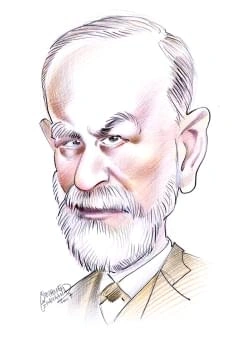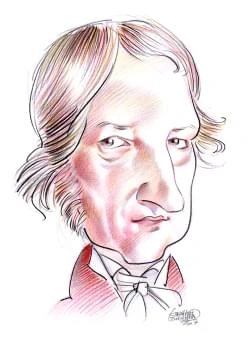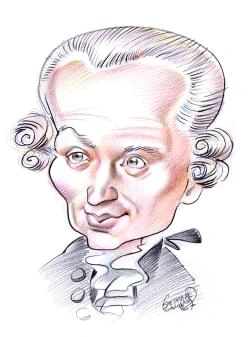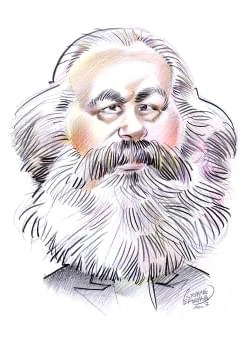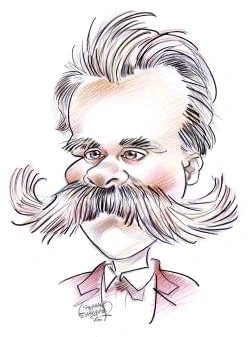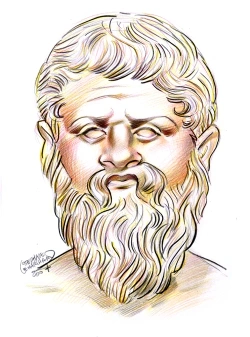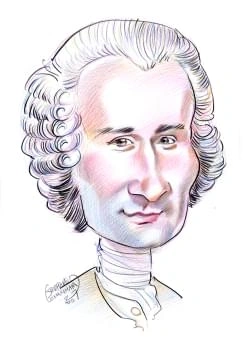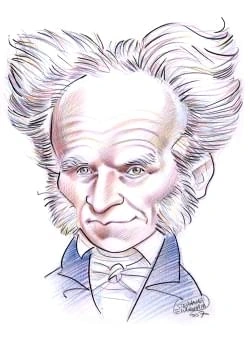188 résultats pour "flow"
-
Iowa - USA History.
Okoboji, Lost Island, Silver, and West Swan lakes. In addition, reservoirs have been created by damming several smaller Iowa rivers. There are a number of largereservoirs behind dams on the Mississippi River along the Iowa state line. C Climate Iowa’s climate is characterized by warm, generally moist summers and cold winters. Temperatures vary considerably from season to season and, at times, from day today. However, monthly averages are relatively uniform throughout the state and usually vary...
-
Virginia (state) - geography.
C Coastline Virginia’s coastline, for both the mainland and the Eastern Shore counties, is 180 km (112 mi) long. The state’s tidal shoreline measures 5,335 km (3,315 mi), includingall bays, inlets, tidal estuaries, and other indentations. Major indentations include Chesapeake Bay; Hampton Roads, the excellent natural harbor on which are locatedNewport News, Norfolk, and Portsmouth; and the wide tidal estuaries of the lower Potomac, James, Rappahannock, and York rivers. Cape Henry, in the southe...
-
Virginia (state) - USA History.
C Coastline Virginia’s coastline, for both the mainland and the Eastern Shore counties, is 180 km (112 mi) long. The state’s tidal shoreline measures 5,335 km (3,315 mi), includingall bays, inlets, tidal estuaries, and other indentations. Major indentations include Chesapeake Bay; Hampton Roads, the excellent natural harbor on which are locatedNewport News, Norfolk, and Portsmouth; and the wide tidal estuaries of the lower Potomac, James, Rappahannock, and York rivers. Cape Henry, in the southe...
-
Michigan - geography.
The interior location of Michigan in the northern part of North America results in a continental climate, characterized by four definite seasons with moist, mild to hotsummers and snowy, cold winters. Winds off of Lakes Michigan and Superior in winter create heavy snow accumulations in nearby areas. The tempering effects of LakeMichigan account for the presence of the state’s famous fruit-growing belt along the lake’s shore. Since the water is colder than the land in spring, the westerly windspa...
-
Michigan - USA History.
The interior location of Michigan in the northern part of North America results in a continental climate, characterized by four definite seasons with moist, mild to hotsummers and snowy, cold winters. Winds off of Lakes Michigan and Superior in winter create heavy snow accumulations in nearby areas. The tempering effects of LakeMichigan account for the presence of the state’s famous fruit-growing belt along the lake’s shore. Since the water is colder than the land in spring, the westerly windspa...
-
Florida - USA History.
accidentally introduced into the region in the 1880s, and it spread with alarming rapidity throughout the upper reaches of the river. The plant is very difficult toeradicate, and it has also clogged the channels of other Florida rivers. To increase drainage of the Everglades, which drain naturally to Florida Bay and the Gulf ofMexico, a number of drainage channels and canals have been built across southern Florida. Among the rivers flowing from the peninsula to the Gulf of Mexico are the Suwanne...
-
Spain - country.
B Natural Resources Spain has a number of mineral resources. The largest known deposits are of iron ore, zinc, and lead. Spain also produces significant quantities of copper and mercury.These deposits are mined mainly in Huelva province in southwestern Spain, around Cartagena on the Mediterranean, and at various points along the Bay of Biscay inthe north. Additionally, uranium is mined in the region of Extremadura, near the Portuguese frontier, where pyrites, fluorspar, gypsum, tungsten, and po...
-
Water Cycle.
salt water into groundwater in densely populated low-lying coastal regions. Levees are built to control the course of rivers, and dams are built to render riversnavigable, store water, and provide electrical power. Evaporation of water behind dams is a serious source of water loss. Increasing urbanization has led to more severeflooding because rainwater reaches streams more rapidly and in greater quantity from areas where the ground has been paved. As human population continues to grow, effectiv...
-
-
Yangtze - Geography.
A Agriculture and Industry Today about 400 million people, or about one-third of the population of China, live in the Yangtze Basin. Many are engaged in agriculture. The basin contributes nearlyhalf of China’s crop production, although only one-quarter of the basin is arable. The most fertile areas for farming are the Sichuan Basin, the plains between theYangtze and its tributary the Han, and the plains of the lower basin. In all about 40 percent of the cereals, more than 30 percent of the cott...
-
Mesopotamia - history.
AssyriaAssyria flourished in the region the ancient Greeks called Mesopotamia. An Assyrian king established what was probably the firstcentrally organized empire in the Middle East, between 1813 and 1780 bc. In defending their territory from nomadic invasions,Assyrians gained a reputation in the ancient Middle East for being relentless and ruthless warriors.© Microsoft Corporation. All Rights Reserved. Beginning about 1350 BC, Assyria, a north Mesopotamian kingdom, began to assert itself. Assyr...
-
Congo (river) - geography.
Lake BangweuluLake Bangweulu, in northeastern Zambia, drains into the Congo by way of the Luapula and Luvua rivers. Lake Bangweulu and thesurrounding swamps form an important ecosystem for many species of migratory birds.Christine Osborne Pictures The Congo’s remotest headstreams rise in northern Zambia and southern DRC, in elevations ranging from 1,000 to 2,000 m (3,000 to 7,000 ft) above sea level. Theseheadstreams are broken by many rapids and therefore cannot be used for commercial navigatio...
-
Congo (river) - Geography.
region as Portuguese territory, leaving a marble shaft on the riverbank as proof of his discovery. To Europeans the river became known as the Rio de Padrão (Pillar River). The Kongo king welcomed Cam and subsequent Portuguese explorers and established friendly trading relations with the Portuguese. More than 300 yearselapsed before serious exploration of the Congo was undertaken. Francisco José de Lacerda, a Portuguese explorer, reached the copper-rich Katanga region from the east in 1798, as...
-
Transistor.
During the late 1960s a new electronic technique, the integrated circuit, began to replace the transistor in complex electronic equipment. Although roughly the samesize as a transistor, an integrated circuit performs the function of 15 to 20 transistors. A natural development from the integrated circuit in the 1970s has been theproduction of medium-, large-, and very large-scale integrated circuits (MSI, LSI, and VLSI), which have permitted the building of a compact computer, orminicomputer, con...
-
Heart.
situation. A Cardiac Cycle Although the right and left halves of the heart are separate, they both contract in unison, producing a single heartbeat. The sequence of events from the beginning ofone heartbeat to the beginning of the next is called the cardiac cycle. The cardiac cycle has two phases: diastole, when the heart’s chambers are relaxed, and systole,when the chambers contract to move blood. During the systolic phase, the atria contract first, followed by contraction of the ventricles. T...
-
Central Processing Unit.
Development of the computer chip started in 1958 when Jack Kilby of Texas Instruments demonstrated that it was possible to integrate the various components of aCPU onto a single piece of silicon. These computer chips were called integrated circuits (ICs) because they combined multiple electronic circuits on the same chip.Subsequent design and manufacturing advances allowed transistor densities on integrated circuits to increase tremendously. The first ICs had only tens of transistorsper chip com...
-
Surrealism
I
INTRODUCTION
Surrealism, artistic and literary movement that explored and celebrated the realm of dreams and the unconscious mind through the creation of visual art, poetry, and
motion pictures.
Hieronymus Bosch’s The Garden of Earthly Delights (about 1505-1510).© 2008 Salvador Dali, Gala-Salvador Dali Foundation / Artists Rights Society (ARS), New York./Bridgeman Art Library, London/New York Dreams, according to Freud, were the royal road to studying the unconscious, because it is in dreams that our unconscious, primal desires manifest themselves. Theincongruities in dreams, Freud believed, result from a struggle for dominance of ego and id. In attempting to access the real workings of...
-
-
Magnetism
I
INTRODUCTION
Magnetism, an aspect of electromagnetism, one of the fundamental forces of nature.
the French physicist Paul Langevin produced a theory regarding the temperature dependence of the magnetic properties of paramagnets (discussed below), which wasbased on the atomic structure of matter. This theory is an early example of the description of large-scale properties in terms of the properties of electrons and atoms.Langevin's theory was subsequently expanded by the French physicist Pierre Ernst Weiss, who postulated the existence of an internal, “molecular” magnetic field inmaterials...
-
From Bulfinch's Mythology: Proserpine - anthology.
the furrow, the seed failed to come up; there was too much sun, there was too much rain; the birds stole the seeds—thistles and brambles were the only growth.Seeing this, the fountain Arethusa interceded for the land. 'Goddess,' said she, 'blame not the land; it opened unwillingly to yield a passage to your daughter. I can tellyou of her fate, for I have seen her. This is not my native country; I came hither from Elis. I was a woodland nymph, and delighted in the chase. They praised mybeauty, bu...
-
Water Pollution.
Cryptosporidium in the water supply of Milwaukee, Wisconsin, sickened more than 400,000 people and killed more than 100. H Thermal Pollution Water is often drawn from rivers, lakes, or the ocean for use as a coolant in factories and power plants. The water is usually returned to the source warmer than when itwas taken. Even small temperature changes in a body of water can drive away the fish and other species that were originally present, and attract other species in placeof them. Thermal pol...
-
Atificiel
Sustainability 2019,11 , 189 2 of 24Since the 1980s, many research was conducted to minimize the error of prediction through a method dubbed as gradient descent. This method is referred to as a Backpropagation algorithm for the training of the ANNs and it was applied to solve problems in different domains using few hidden layers [ 5,6]. Today, the availability of data has introduced the concept of machine learning as a subcategory to AI. Machine learning implies coding the computers to behave l...
-
Anatomy.
The body defends itself against foreign proteins and infectious microorganisms by means of a complex dual system that depends on recognizing a portion of the surfacepattern of the invader. The two parts of the system are termed cellular immunity, in which lymphocytes are the effective agent, and humoral immunity, based on theaction of antibody molecules. When particular lymphocytes recognize a foreign molecular pattern (termed an antigen), they release antibodies in great numbers; other lymphocy...
-
Skin.
I
INTRODUCTION
Skin, outer body covering of an animal. The term skin
III SKIN APPENDAGES In humans, the skin appendages, or structures embedded in the skin, include hair, nails, and several types of glands. Glands are groups of cells that produce andsecrete substances needed by other parts of the body. In other vertebrates, the skin appendages include scales (in fish and reptiles) and feathers (in birds). Together,the skin and the skin appendages are known as the integumentary system of the body. A Hair Hair is a distinguishing characteristic of mammals, a gro...
-
First Aid.
IV SEVERE BLEEDING The presence of blood over a considerable area of a person’s body does not always indicate severe bleeding. The blood may ooze from multiple small wounds or besmeared, giving the appearance of more blood than is actually present. The rate at which blood is lost from a wound depends on the size and kind of blood vesselruptured. Bright red, spurting blood indicates injury to an artery while welling or steadily flowing, dark red blood indicates injury to a vein. Welling or spur...
-
Maya Civilization.
destruction was directed mostly at temples in the ceremonial precincts; it had little or no impact on the economy or population of a city as a whole. Some city-states didoccasionally conquer others, but this was not a common occurrence until very late in the Classic period when lowland civilization had begun to disintegrate. Until thattime, the most common pattern of Maya warfare seems to have consisted of raids employing rapid attacks and retreats by relatively small numbers of warriors, most o...
-
-
Maya Civilization - History.
destruction was directed mostly at temples in the ceremonial precincts; it had little or no impact on the economy or population of a city as a whole. Some city-states didoccasionally conquer others, but this was not a common occurrence until very late in the Classic period when lowland civilization had begun to disintegrate. Until thattime, the most common pattern of Maya warfare seems to have consisted of raids employing rapid attacks and retreats by relatively small numbers of warriors, most o...
-
Telecommunications.
commonly referred to as wireless communications, use technologies such as cordless telephones, cellular radio telephones, pagers, and satellites. Wirelesscommunications offer increased mobility and flexibility. In the future some experts believe that wireless devices will also offer high-speed Internet access. C Wires and Cables Wires and cables were the original medium for telecommunications and are still the primary means for telephone connections. Wireline transmission evolved fromtelegraph...
-
Bird.
I
INTRODUCTION
Bird, animal with feathers and wings. Birds are the only
B Physical Adaptations for Flight The internal body parts of all birds, including flightless ones, reflect the evolution of birds as flying creatures. Birds have lightweight skeletons in which many of themajor bones are hollow. A unique feature of birds is the furculum, or wishbone, which is comparable to the collarbones of humans, although in birds the left and rightportions are fused together. The furculum absorbs the shock of wing motion and acts as a spring to help birds breathe while they...
-
Bird - biology.
B Physical Adaptations for Flight The internal body parts of all birds, including flightless ones, reflect the evolution of birds as flying creatures. Birds have lightweight skeletons in which many of themajor bones are hollow. A unique feature of birds is the furculum, or wishbone, which is comparable to the collarbones of humans, although in birds the left and rightportions are fused together. The furculum absorbs the shock of wing motion and acts as a spring to help birds breathe while they...
-
South America - Geography.
South America is dominated by relatively warm climatic regimes. Spanning nearly the entire continent along the equator is a belt of humid tropical climate that grades tothe north and south into broad zones where the length of the rainy season and the amount of rainfall diminish. These zones have wet summers and dry winters and aresubject to prolonged droughts. Droughts are a particularly serious problem in northeastern Brazil and along the northern coast of Venezuela and Colombia. The areas ofra...
-
Utah - geography.
Temperatures decrease from the south to the north in the state. In the mountains the average temperature drops about 0.5°C (about 1°F) for every about 300 m(about 1,000 ft) rise in elevation. Average July temperatures range from less than 16°C (60°F) in the mountains to more than 27°C (80°F) in a few locations insouthern Utah. At Salt Lake City average July temperatures range from a low of 18°C (64°F) to a high of 33°C (92°F). There is a great variation between daytime andnighttime temperatures,...
-
Utah - USA History.
Temperatures decrease from the south to the north in the state. In the mountains the average temperature drops about 0.5°C (about 1°F) for every about 300 m(about 1,000 ft) rise in elevation. Average July temperatures range from less than 16°C (60°F) in the mountains to more than 27°C (80°F) in a few locations insouthern Utah. At Salt Lake City average July temperatures range from a low of 18°C (64°F) to a high of 33°C (92°F). There is a great variation between daytime andnighttime temperatures,...
-
Greece - country.
minerals, such as chromium, copper, uranium, and magnesium, are relatively small. Greece’s small petroleum deposits, located under the Aegean Sea near the island ofThásos, are rapidly being depleted. There are no significant reserves of natural gas. Greece’s forests, probably abundant in ancient times, have been significantly depleted. Subsequent soil erosion has made reforestation efforts difficult. Although muchof Greece’s soil is rocky and dry, the country’s mountains are interspersed with sm...
-
-
Ontario - Geography.
governed Ontario’s initial settlement and development. The province’s most important river is the St. Lawrence. Its route was much improved and enlarged by dredgingand canal building in the mid-20th century. This enabled large ocean-going vessels to reach Great Lake ports ( see St. Lawrence Seaway). The Ottawa River was an important early route to the interior for fur traders and timber merchants. The Niagara River, because of its falls, is a great center of hydroelectric power as well as aninte...
-
Ontario - Canadian History.
governed Ontario’s initial settlement and development. The province’s most important river is the St. Lawrence. Its route was much improved and enlarged by dredgingand canal building in the mid-20th century. This enabled large ocean-going vessels to reach Great Lake ports ( see St. Lawrence Seaway). The Ottawa River was an important early route to the interior for fur traders and timber merchants. The Niagara River, because of its falls, is a great center of hydroelectric power as well as aninte...
-
Asia - geography.
the Himalayas, the world’s highest mountain system. The Pacific Ocean plate drifted westward, scraping along the Eurasian plate and slipping under its coastal edge. This created the islands of Japan, Taiwan, the Kurils, theRyūky ūs, and the Philippines. Southeast Asia lies at the intersection of the Eurasian, Pacific Ocean, and Indian Ocean plates. Over time the contact between these platescreated the mountain ranges of mainland Southeast Asia. The continued slow movement of the plates causes fr...
-
Asia - history.
the Himalayas, the world’s highest mountain system. The Pacific Ocean plate drifted westward, scraping along the Eurasian plate and slipping under its coastal edge. This created the islands of Japan, Taiwan, the Kurils, theRyūky ūs, and the Philippines. Southeast Asia lies at the intersection of the Eurasian, Pacific Ocean, and Indian Ocean plates. Over time the contact between these platescreated the mountain ranges of mainland Southeast Asia. The continued slow movement of the plates causes fr...
-
New York - geography.
The Adirondack province consists of a large highland area occupying 26,000 sq km (10,000 sq mi) in the northeastern quarter of the state. The region is domelike inshape, with the higher elevations toward the east. The western Adirondack province is more a rugged hill region and not truly mountainous. Geologically, this area isrelated to the Laurentian Upland, or Canadian Shield, which lies north of the St. Lawrence River, for it is composed of the same very old igneous rocks, principallygranite...
-
New York - USA History.
The Adirondack province consists of a large highland area occupying 26,000 sq km (10,000 sq mi) in the northeastern quarter of the state. The region is domelike inshape, with the higher elevations toward the east. The western Adirondack province is more a rugged hill region and not truly mountainous. Geologically, this area isrelated to the Laurentian Upland, or Canadian Shield, which lies north of the St. Lawrence River, for it is composed of the same very old igneous rocks, principallygranite...
}})
